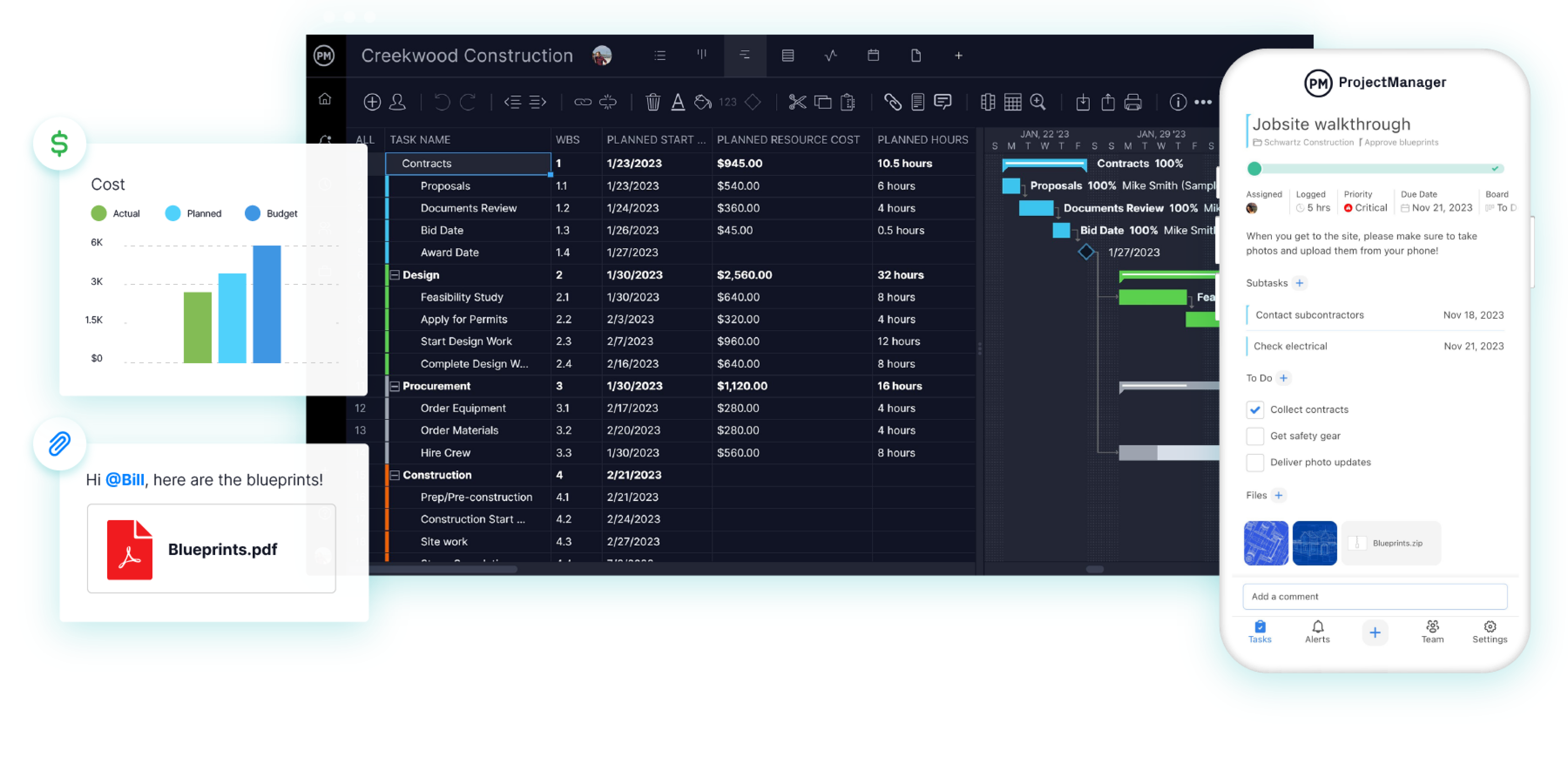Construction Software for Effective Project Planning and Execution
Construction Software for Effective Project Planning and Execution
Blog Article
Advanced Building And Construction Administration Software: Enhancing Efficiency and Collaboration in the Sector
In an industry where precision and efficiency are extremely important, the assimilation of advanced construction management software has transformed the means jobs are prepared, carried out, and checked. By supplying real-time task monitoring capacities, boosted source appropriation attributes, and smooth communication systems, these software application options have become important tools for building experts aiming to elevate their performance and foster more powerful team effort.
Benefits of Advanced Construction Software Program
The use of innovative building software substantially improves performance and project outcomes within the construction market. Via features like automated organizing, real-time collaboration devices, and data analytics, job supervisors can much more properly plan, track, and screen task development.
In addition, advanced building software application aids boost interaction and partnership amongst task stakeholders. With centralized platforms for sharing job papers, tracking adjustments, and communicating updates, teams can work a lot more cohesively in the direction of common project objectives. This cultivates far better decision-making, reduces the probability of mistakes, and boosts overall job top quality.
Furthermore, progressed construction software provides insights with information analytics that can aid recognize fads, maximize procedures, and mitigate dangers. By leveraging data-driven knowledge, construction firms can make even more educated decisions, adjust to transforming task characteristics, and inevitably drive far better task results. In general, the benefits of sophisticated building software contribute in enhancing productivity, collaboration, and job success within the building industry.
Real-Time Project Monitoring Abilities
With the seamless integration of real-time job tracking capabilities, building and construction groups can effectively keep an eye on development, boost decision-making, and make sure job timelines are met. Real-time task monitoring allows stakeholders to access updated information on numerous elements of the building project, consisting of task conclusion standing, resource allowance, and potential traffic jams. This level of openness fosters collaboration amongst staff member, subcontractors, and clients, leading to boosted communication and quicker trouble resolution.
Additionally, real-time project monitoring offers task managers with the essential data to make informed choices quickly. By having split second accessibility to vital efficiency signs and task metrics, managers can recognize problems beforehand, execute corrective measures, and optimize task workflows. This positive approach assists in preventing delays, reducing expenses, and inevitably increasing general task performance.

Enhanced Source Allocation Functions
Using innovative source allocation tools simplifies construction project administration procedures and maximizes workforce effectiveness. These functions make it possible for task supervisors to assign tasks, devices, and products with precision, guaranteeing that resources are utilized properly (construction project management software). By having a central system that gives real-time visibility right into source schedule and requirements, construction teams can make informed decisions without delay, preventing delays and cost overruns
Improved source allocation functions also facilitate far better cooperation amongst staff member. With clear jobs and clear resource distribution, every specific comprehends their role and obligations, cultivating team effort and accountability. This brings about enhanced communication and control, eventually improving efficiency and project end results.

Improved Communication Systems
Enhancing communication systems in read this building monitoring software application considerably enhances task coordination and effectiveness. By integrating functions such as real-time messaging, documents sharing, and task assignments, groups can collaborate flawlessly despite their physical areas. With improved interaction systems, stakeholders can receive immediate updates, share vital files, and review project information without hold-ups, leading to quicker decision-making procedures.
Furthermore, these sophisticated interaction devices enable much better openness and liability within building and construction projects. Group participants check over here can track progress, offer comments, and address concerns promptly, promoting an extra joint and effective workplace. In addition, having actually centralized communication channels within the building and construction management software application reduces the threat of miscommunication and makes certain that all staff member are on the same page.
Simplifying Operations for Performance
By executing streamlined operations, building business can eliminate traffic jams, minimize errors, and make certain that tasks progress efficiently from begin to complete. One way to attain this is by automating repeated tasks such as task scheduling, source allowance, and development tracking.
Furthermore, integrating various elements of task administration, such as budgeting, document administration, and communication, into a single platform can further simplify workflows. This assimilation permits for real-time partnership and data sharing amongst staff member, removing the need for hand-operated data entry and ensuring that everybody is collaborating with the most current information.

Conclusion
In verdict, progressed construction administration software application provides various advantages such as real-time project tracking, improved source allocation, enhanced interaction systems, and streamlined operations. These attributes contribute to enhanced performance and cooperation within the sector. By using this technology, building firms can optimize their operations, assign resources better, and facilitate better communication Recommended Site among team participants. On the whole, progressed building and construction software plays a vital duty in boosting performance and success in building and construction tasks.
Report this page